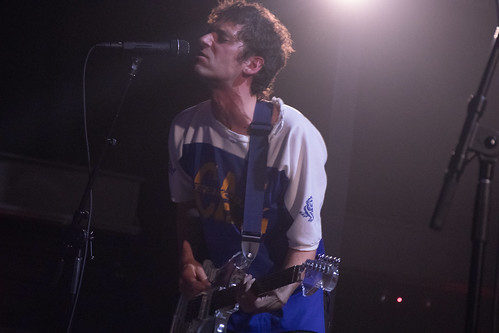Devon Welsh is a Montreal-based singer/songwriter and artist, who released two critically acclaimed full-length albums as the frontman of Majical Cloudz, an electronic duo whose brooding and intense music combined elements of poetry, hardcore, folk and minimalist electronica among others. The project ended in 2016 largely because its members felt it had fulfilled its intentions.”The band has come to a very natural conclusion, as it has communicated everything it was meant to and reached more people than we would have ever imagined,” Welsh said at the time.
Following the breakup of Majical Cloudz, Welsh stepped away from music for a year. “I wrote songs but didn’t think about their purpose or anything at all to do with the music industry or if I would be releasing music in the future,” he said about that time. “I just tried to grow as a person and do some learning.” Interestingly, the songs he wrote during that period would eventually comprise much of the material on his solo, full-length debut, Dream Songs. Slated for an August 24, 2018 release through You Are Accepted Records, the album finds Welsh stepping out and away from the strict aesthetic he had worked in with Majical Cloudz but while continuing and expanding upon some of the core themes an ideas which that project was best known for — and as a result, the material thematically is a series of reflections on time and its passing, separation, the complexities of love, free will, life’s endless cycles and so on.
Produced and recorded by BRAIDS’ Austin Tufts with the intention of making an album that maintained the simplicity and minimalism of Welsh’s previous work while exploring the possibilities of more traditional arrangements — guitar, piano, strings — the album presents the Montreal-based singer/songwriter and artist’s songs in a more organic context. As the story goes, Tufts and Welsh essentially rebuilt the recordings from the ground up, working out kinks in demos, imagining different arrangements and re-recorded everything. The simple string arrangements Devon’s demos possessed were transformed and became the sonic and emotional center of the entire album. “I love songs with strings,” Welsh says in press notes, “so making recordings with beautiful string arrangements is a dream come true.
Dream Songs’ first single “By The Daylight” is chronologically one of the oldest songs on the album — and as Welsh explains, it began with a very different arrangement than the recorded version. “It was originally made mostly with synthesizers and had saxophone on it, and then when Austin and I started re-recording the demos it got transformed into something built almost entirely around strings,” Welsh says in press notes, “the new arrangement opened a lot of mental possibilities for what the record as a whole could be.” Thematically, the song has a fatalistic view of life — that there are larger, deterministic forces at play in our lives, and as a result, we’re frequently caught up and swept away in a tide that we don’t (and can’t) really understand. It’s a mature and meditative song with a deep and aching yearning at its core.
Directed by Christopher Honeywell, the recently released video features footage of nature, some shot on old, Super 8 film — and in a subtle way, the video conveys passing of time and the sense of larger, natural forces at play.



